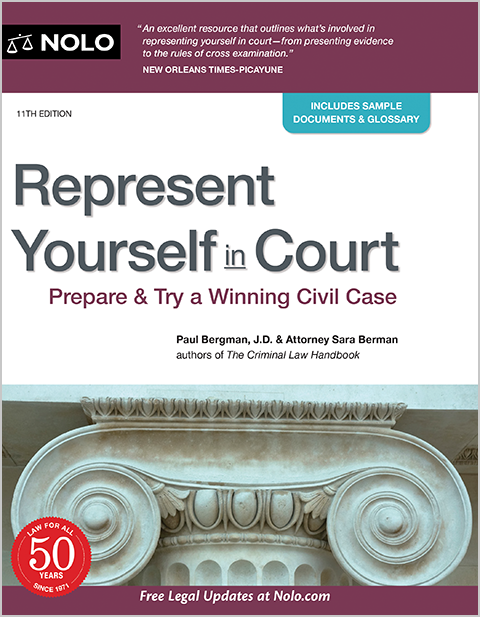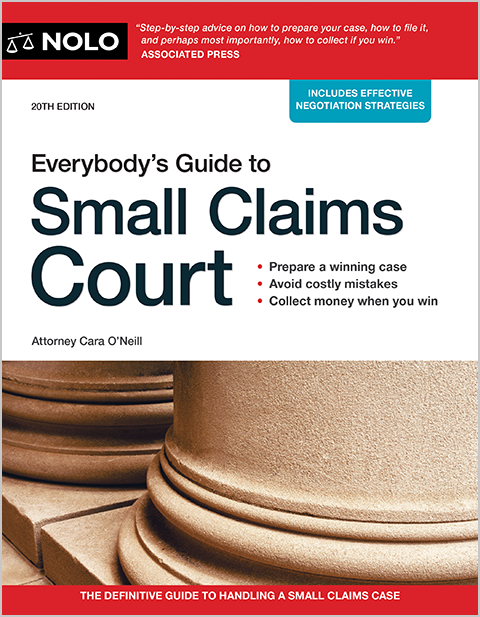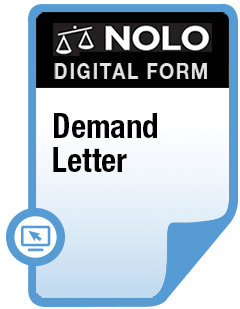You got a Connecticut money judgment. Now it's time to collect. We explain how to record Connecticut judgment liens, collect on a lien, and more.
You went to court and got a judgment that says you're entitled to money from the party you sued, now called a "judgment debtor." What comes next? How can you—the judgment creditor—collect the money you're due? That's the focus of this article.
One way to collect is by putting judgment liens on the judgment debtor's Connecticut property. After a quick review of how judgment liens differ from judgments, we'll turn our attention to the specifics of Connecticut law. In particular, we cover:
- the kinds of property subject to Connecticut judgment liens
- how you put judgment liens on Connecticut property
- how long your judgment lien lasts, and
- the ways you can turn your judgment lien into money.
If you want some background information, here's more about how court judgments are collected.
- What's the Difference Between a Judgment and a Judgment Lien?
- Kinds of Property Subject to Connecticut Judgment Liens
- Property Exempt From Connecticut Judgment Liens
- How to Attach Connecticut Judgment Liens
- How Long Does a Connecticut Judgment Last?
- How Do You Turn a Connecticut Judgment Lien Into Money?
- Next Steps
What's the Difference Between a Judgment and a Judgment Lien?
A judgment is a court order that says a judgment creditor is legally entitled to a sum of money from a judgment debtor. But a judgment, standing alone, isn't self-enforcing. That is, you can't take a judgment to your county sheriff's office and demand that the judgment debtor's real estate be sold to pay you.
If you want to seize and sell the judgment debtor's property, you first have to attach your judgment to specific items of property. That's what a judgment lien does. As we'll see below, when you properly file a judgment lien certificate, a judgment lien attaches to the judgment debtor's nonexempt property. At that point, you can look for ways to turn your judgment into cold, hard cash.
Kinds of Property Subject to Connecticut Judgment Liens
In Connecticut, you can attach judgment liens to:
- real estate, such as land, buildings, and other improvements, and
- personal property like cars, equipment, inventory, goods, accounts, and more.
We discuss the processes for attaching judgment liens below.
Property Exempt From Connecticut Judgment Liens
Like all states, Connecticut exempts some property—both real and personal—from the reach of creditors. Dollar amounts mentioned here represent the maximum value of the debtor's exempt equity in the property, which might not be the same as the property's market value.
Here are a few examples:
- a homestead exemption of up to $250,000
- clothing, bedding, food, furniture, and appliances
- health and disability insurance proceeds, worker's compensation payments, and Social Security and unemployment benefits
- up to two motor vehicles having an aggregate value of not more than $7,000, and
- tools, books, implements, animals, and feed necessary for the debtor's occupation, profession, or farming operation.
How to Attach Connecticut Judgment Liens
Attaching judgment liens to Connecticut property is straightforward, though identifying personal property to attach can be a challenge.
Judgment Liens on Real Estate
To attach a judgment lien to the judgment debtor's Connecticut real estate, start by preparing a judgment lien certificate. The certificate must:
- state the names and last known addresses of the judgment creditor and judgment debtor
- identify the court that granted the judgment and the date judgment was entered
- include the amount of the original judgment, along with the amount presently due
- provide a description of the real estate to which the lien will attach
- include a statement that a lien has been placed on the property, and
- be signed by you or your attorney.
File the judgment lien certificate with the town clerk for the town where the property is located. Once filed, you have a judgment lien against that property. Your lien is good for 20 years from the date the judgment was entered—10 years for small claims judgments—but it can be extended if you sue to foreclose the lien and file a notice of your lawsuit in the town land records.
Note that different rules apply in cases involving a "consumer judgment," meaning a judgment for less than $5,000 against a person for a personal, family, or household debt.
Judgment Liens on Personal Property
Attaching a judgment lien to Connecticut personal property is easy. After you've identified the property you want to attach (see below), prepare a judgment lien certificate that:
- states the names and last known addresses of the judgment creditor and judgment debtor
- identifies the court that granted the judgment and the date judgment was entered
- includes the amount of the original judgment, along with the amount presently due
- provides a description of the property to which the lien will attach, and
- is signed by you or your attorney.
File the certificate with the Connecticut Secretary of State. Once that's done, you have a lien against the property you identified. The lien lasts for five years and can be extended for additional five-year terms, for as long as your judgment remains good (discussed below).
A judgment lien can attach to a wide range of Connecticut personal property, including autos, equipment, machinery, inventory, goods, accounts, and more. If the judgment debtor lives outside Connecticut, though, a lien will only attach to tangible personal property.
If you're thinking about going after the judgment debtor's personal property, speak to a Connecticut collection lawyer first. They'll explain whether it might be worth your time and expense—and there's a good chance it won't be. If it's likely to be worthwhile, they'll guide you through the process.
How Long Does a Connecticut Judgment Last?
You have up to 20 years from the date judgment was entered—10 years for a small claims judgment—to collect it. After the applicable deadline has passed, further collection activity is prohibited. Connecticut law doesn't provide any way to extend the life of your original judgment beyond this 20- or 10-year term.
But Connecticut law contains a loophole that might give you a way to get more time. Specifically, you can file a new lawsuit based on the original judgment within 25 years from the date the judgment was entered (15 years for small claims judgments). If your new lawsuit succeeds, you get a new judgment with a new 20-year or 10-year collection life. You'll want help from a Connecticut collection attorney if you're thinking about a lawsuit.
Finally, note that filing a new lawsuit and getting a new judgment doesn't automatically renew or extend your judgment liens. If you still want those liens—and you do if the judgment debtor hasn't paid what you're owed—you'll have to follow the procedures described above to attach new liens to the judgment debtor's real estate or personal property.
How Do You Turn a Connecticut Judgment Lien Into Money?
In general, there are three ways you can try to collect on a Connecticut judgment lien:
- negotiate a settlement
- wait for the judgment debtor to sell or refinance the property, and
- execute on your lien.
Negotiate a Settlement
If you want payment sooner rather than later, this is likely your best choice. No, you won't get all the money you're entitled to, but that's the nature of a settlement. You'll collect faster—and more inexpensively—than via the other two options.
Wait for the Judgment Debtor to Sell or Refinance
Most often, a buyer or lender will insist on clear title, free of all judgment liens. So, to sell or refinance, the judgment debtor will have to approach you to make a deal. Only now, you've got more negotiating leverage. As long as you're willing to sit tight and wait, this too is a low-cost, low-stress way to collect.
Execute on Your Lien
Executing on your lien means having the sheriff sell the judgment debtor's property at auction. This might seem like a tempting option. But before you head down this path, check with a local attorney to find out about the legwork and costs involved. In addition, see who's ahead of you in payment priority, or you might discover—too late—that the sale proceeds aren't enough to pay you in full (or at all).
Lastly, be aware that this step might be just the push the judgment debtor needs to declare bankruptcy. Should that happen, you're likely to be standing in a long, very unhappy line of creditors with little chance of getting paid.
Next Steps
We've covered Connecticut judgment lien basics, but of course, the devil's in the details. Now that you're familiar with Connecticut law, you might decide that your best option is to get help collecting your judgment. An experienced Connecticut creditor's rights or collection attorney can answer your questions and help you chart a collection path that gives you the best chance to maximize your recovery.
- What's the Difference Between a Judgment and a Judgment Lien?
- Kinds of Property Subject to Connecticut Judgment Liens
- Property Exempt From Connecticut Judgment Liens
- How to Attach Connecticut Judgment Liens
- How Long Does a Connecticut Judgment Last?
- How Do You Turn a Connecticut Judgment Lien Into Money?
- Next Steps



